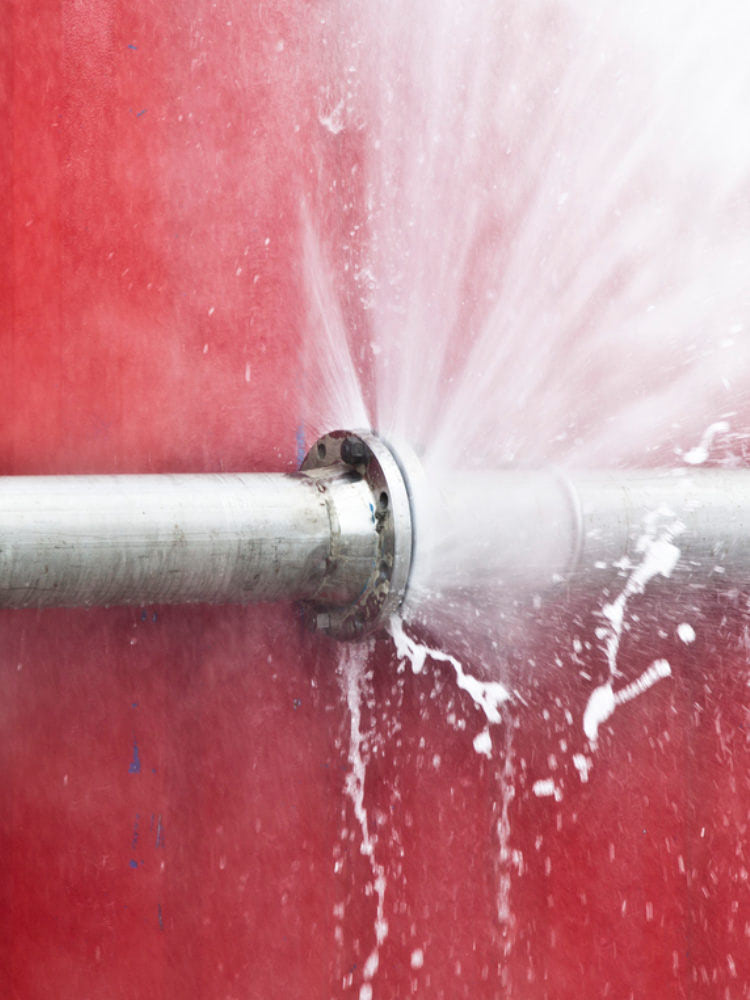Your Home's Primary Common Leak Factors: Analysis
Your Home's Primary Common Leak Factors: Analysis
Blog Article
They are making several good points about Common Water Leaks In House in general in this great article in the next paragraphs.

Leakages not only cause waste of water but can additionally create unneeded damage to your residence as well as advertise undesirable organic growth. Unfortunately, water leakages could go undetected given that the majority of the pipework in our residence is concealed. By looking as well as understanding for day-to-day circumstances that cause leakages, you can safeguard your residence from future leaks and also unnecessary damages. Today, we will consider six leakage causes that might be causing your pipes to trickle.
Instantaneous temperature level changes.
Severe temperature level adjustments in our pipes can cause them to increase as well as contract unexpectedly. This growth and contraction might trigger splits in the pipes, specifically if the temperature level are below freezing. It would certainly be best if you kept an eye on how your plumbing works. The presence of the previously mentioned circumstances regularly indicates a high risk.
Rusty water systems
This might be the reason of discoloration or bending on your water pipelines. If our plumbing system is old, take into consideration changing the pipelines since they are at a greater threat of corrosion than the more recent designs.
Defective Pipeline Joints
The factor at which your pipes connect is regularly the weakest link in the waterline. Pipeline joints can weaken with time, resulting in water leakages. Unfortunately, the majority of pipeline joints are not conveniently visible. If you have loud pipes that make ticking or banging noises, particularly when the hot water is switched on, your pipeline joints are possibly under a great deal of stress. It is recommended to have your plumber examine your system yearly.
Elbowing in origins
Many water leakages begin outside your home rather than inside it. If you discover an unexpected reduction in water pressure, say in your faucet, take some time to go out and also examine your lawn. You could notice wet patches or sinkholes in your lawn, and that could mean that tree origins are invading water lines creating water to seep out. You can have your plumber check for breach, particularly if you have trees or hedges near your residential property.
Poor Water Connectors
At times, a leak can be caused by loose hoses as well as pipes that provide your appliances. In case of a water connections leak, you may notice water running straight from the supply line or puddles around your devices.
Blocked Drains
Obstructed drains pipes could be aggravating as well as inconveniencing, but they can often end up triggering an overflow leading to rupture pipelines. Keep getting rid of any materials that might go down your drains that might obstruct them to avoid such troubles.
All the above are causes of leakages however not all water leakages arise from plumbing leakages; some leaks might come from roofing leakages. All leakages need to be fixed instantly to prevent water damage.
Leaks not just trigger waste of water however can likewise trigger unnecessary damage to your house as well as promote unwanted natural development. By looking as well as comprehending for daily circumstances that trigger leaks, you can protect your home from future leaks and unnecessary damage. Today, we will look at six leakage triggers that might be triggering your pipes to drip.
At times, a leak can be created by loosened pipes and pipelines that provide your appliances. In situation of a water connections leakage, you may notice water running directly from the supply line or pools around your home appliances.
How To Check For Water Leak In Your Home
How To Check for Leaks
The average household's leaks can account for nearly 10,000 gallons of water wasted every year and ten percent of homes have leaks that waste 90 gallons or more per day. Common types of leaks found in the home are worn toilet flappers, dripping faucets, and other leaking valves. These types of leaks are often easy to fix, requiring only a few tools and hardware that can pay for themselves in water savings. Fixing easily corrected household water leaks can save homeowners about 10 percent on their water bills.
To check for leaks in your home, you first need to determine whether you're wasting water and then identify the source of the leak. Here are some tips for finding leaks:
Take a look at your water usage during a colder month, such as January or February. If a family of four exceeds 12,000 gallons per month, there are serious leaks.
Check your water meter before and after a two-hour period when no water is being used. If the meter changes at all, you probably have a leak.
Identify toilet leaks by placing a drop of food coloring in the toilet tank. If any color shows up in the bowl after 10 minutes, you have a leak. (Be sure to flush immediately after the experiment to avoid staining the tank.)
Examine faucet gaskets and pipe fittings for any water on the outside of the pipe to check for surface leaks.
Undetected water leaks can happen without the home or business owner even realizing. If you suspect a water leak, but not able to find the source. It is time to contact a professional water leak detection service, The Leak Doctor.
How To Find a Water Leak In Your Home
https://www.leakdoctor.com/blog/How-To-Check-For-Water-Leak-In-Your-Home_AE197.html

As a serious reader on How to Find Water Leaks, I think sharing that piece of content was a good thing. Do you know somebody who is very much interested in the subject? Please feel free to promote it. We value reading our article about How Fast Water Damage Can Ruin Your Home.
Stress-free? Call now! Report this page